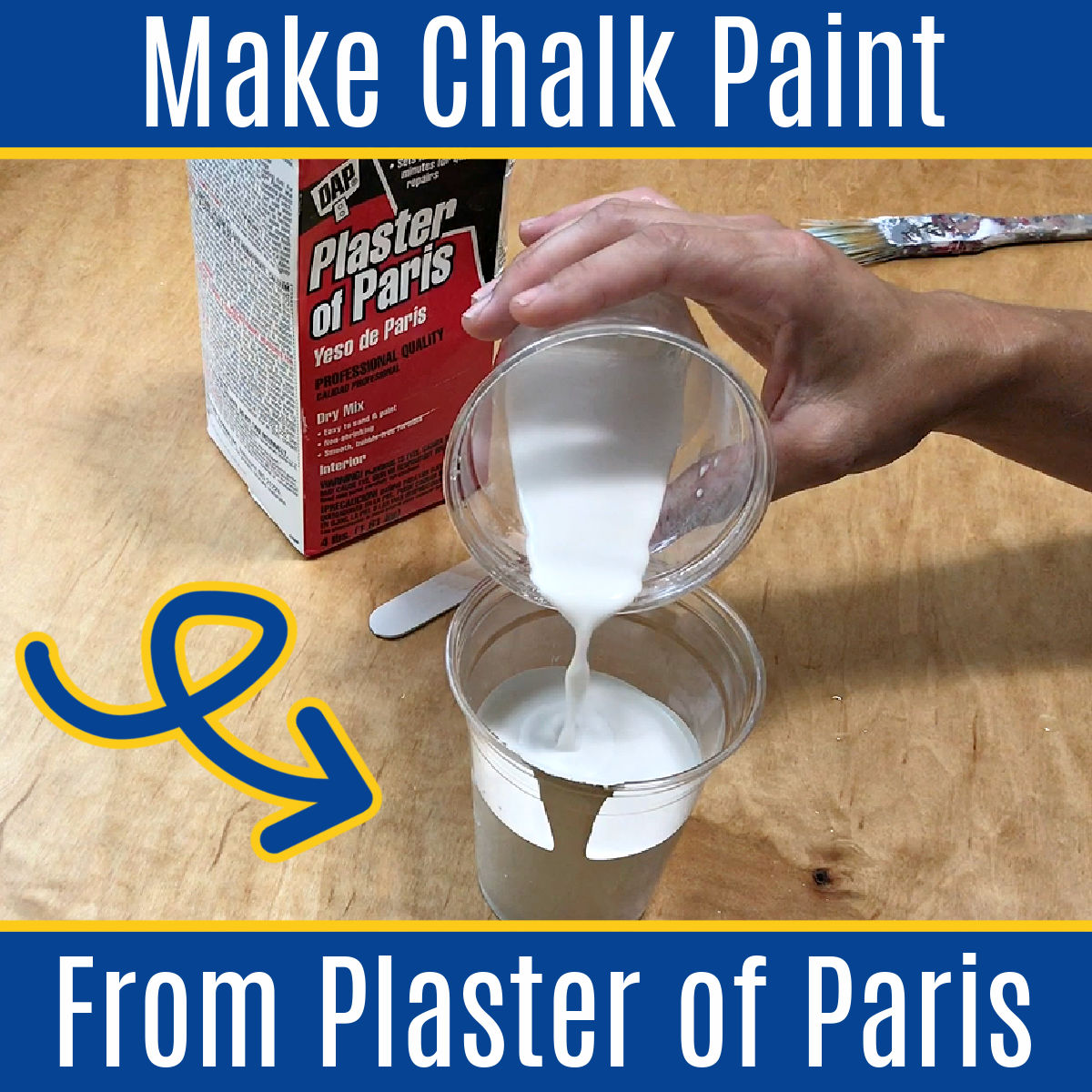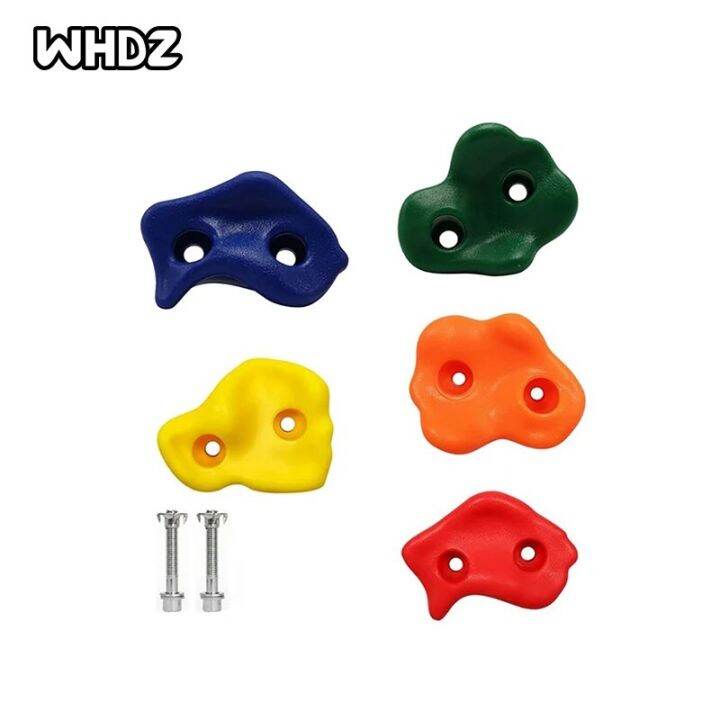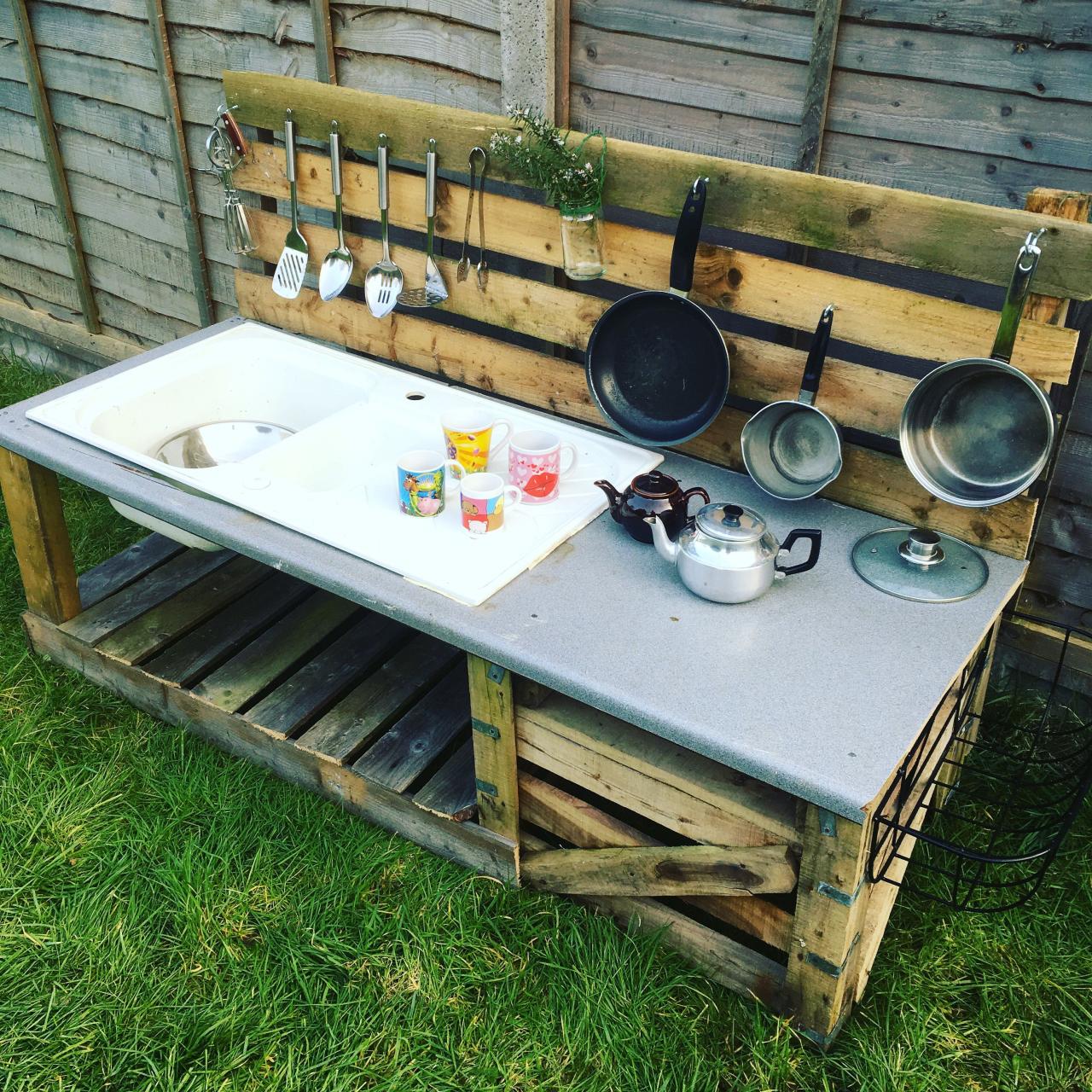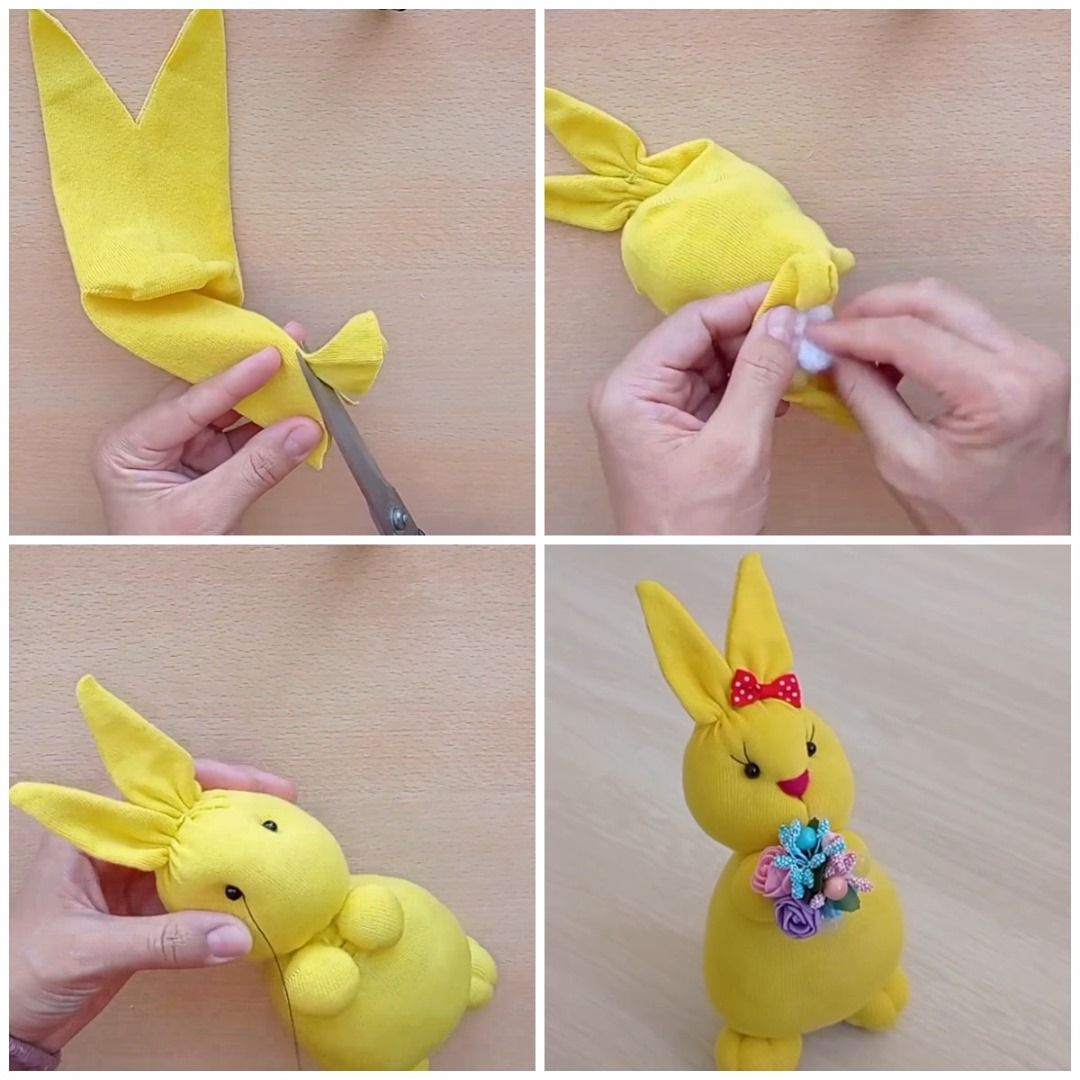Homemade chalk paint offers a fantastic way to transform furniture, walls, and accessories with a touch of vintage charm and personalized style. This DIY approach allows you to create unique finishes while saving money and minimizing environmental impact. With a few basic ingredients and a bit of creativity, you can unlock a world of possibilities for upcycling and decorating your home.
The beauty of homemade chalk paint lies in its simplicity. It’s essentially a blend of paint, a binder, and sometimes a touch of color pigment. This allows for endless customization, from soft pastels to bold hues, making it perfect for any project. Whether you’re a seasoned DIY enthusiast or a beginner, homemade chalk paint provides a rewarding and accessible way to express your artistic side.
Introduction to Homemade Chalk Paint
Homemade chalk paint offers a cost-effective and environmentally friendly alternative to commercially available options. This paint, known for its matte finish and ability to adhere to various surfaces, allows you to transform furniture, walls, and other objects with a vintage, rustic, or modern aesthetic.
Benefits of Homemade Chalk Paint
Homemade chalk paint provides several advantages over store-bought alternatives, including:
- Cost-effectiveness: You can create a significant amount of chalk paint for a fraction of the cost of store-bought options.
- Customization: You can control the color and consistency of your paint, allowing you to create unique shades and finishes.
- Environmentally friendly: Using readily available ingredients and minimizing packaging waste reduces your environmental impact.
- Versatility: Homemade chalk paint can be used on various surfaces, including wood, metal, and even fabric.
Basic Ingredients and Materials
The fundamental components of homemade chalk paint are:
- Paint Base: This is the foundation of your chalk paint. Common options include latex paint, acrylic paint, or even leftover wall paint.
- Plaster of Paris: This ingredient provides the chalky texture and finish that defines chalk paint. It acts as a binder, giving the paint a smooth, matte surface.
- Water: Water helps to thin the paint and create a smooth consistency.
- Color Pigments: These are used to create the desired color. You can use acrylic paint, powdered pigments, or even natural ingredients like coffee grounds or turmeric for unique shades.
Choosing the Right Paint Base and Color Pigments
Selecting the right paint base and color pigments is crucial for achieving the desired finish and color.
- Paint Base:
- Latex Paint: This is a common choice due to its durability and water-based formula, making it easy to clean up.
- Acrylic Paint: Offers excellent adhesion and dries quickly, making it suitable for various surfaces.
- Leftover Wall Paint: Repurposing leftover wall paint is a great way to save money and reduce waste.
- Color Pigments:
- Acrylic Paint: Provides vibrant colors and blends easily with the paint base.
- Powdered Pigments: Offer a wide range of colors and can be used to create unique shades.
- Natural Ingredients: Coffee grounds, turmeric, and even cocoa powder can add depth and unique tones to your paint.
Techniques for Applying Homemade Chalk Paint
Applying homemade chalk paint requires some basic techniques and tools to ensure a smooth and even finish. This section will discuss various methods for applying chalk paint, including the importance of proper preparation, and provide tips for achieving a professional-looking result.
Surface Preparation
Before applying chalk paint, it’s essential to prepare the surface properly. This ensures that the paint adheres well and creates a long-lasting finish.
- Cleaning: The surface should be clean and free of dirt, grease, and dust. Use a mild detergent and water to clean the surface, and allow it to dry completely.
- Sanding: For surfaces with existing paint, sanding is essential to create a rough surface for the chalk paint to adhere to. Use fine-grit sandpaper (120-180 grit) to lightly sand the surface, creating a smooth finish.
- Priming: For bare wood or surfaces with significant imperfections, a primer can help create a smooth base for the chalk paint. Apply a primer specifically designed for chalk paint, allowing it to dry completely before proceeding.
Tools for Applying Chalk Paint
Several tools can be used to apply homemade chalk paint, each with its own advantages and disadvantages.
- Brushes: Brushes are a popular choice for applying chalk paint, offering excellent control and precision. Choose brushes with natural bristles, as they tend to hold more paint and distribute it evenly.
- Sponges: Sponges are a good option for applying chalk paint to large areas or creating a distressed look. They create a slightly textured finish, ideal for adding character to furniture or other surfaces.
- Rollers: Rollers are ideal for covering large areas quickly and efficiently. Use a foam roller with a short nap for a smooth finish.
Techniques for Applying Chalk Paint, Homemade chalk paint
The technique used to apply chalk paint can significantly impact the final finish.
- Thin Coats: It’s best to apply chalk paint in thin, even coats, allowing each coat to dry completely before applying the next. This helps prevent brushstrokes and ensures a smooth finish.
- Layering and Blending: To create unique and interesting color effects, you can layer different colors of chalk paint. Apply a base coat, allowing it to dry, then apply a second coat of a different color, blending the two colors at the edges.
- Distressing: For a vintage or rustic look, you can distress the chalk paint after it dries. Use sandpaper, a sanding block, or a wire brush to create a distressed effect, revealing the underlying layers.
Distressing and Finishing Techniques
Distressing and finishing are essential steps in the chalk paint process, adding character and depth to your projects. Distressing creates a vintage or antique look by simulating wear and tear, while finishing protects the paint and enhances its appearance.
Distressing Techniques
Distressing techniques create the illusion of age and use by exposing the underlying wood or surface.
- Sanding: Using sandpaper of varying grits, you can gently sand away areas of the paint to create a worn look. Light sanding with fine-grit sandpaper creates subtle distressing, while coarser grits produce more pronounced effects.
- Scraping: Using a scraper, you can create more defined distressed areas. Scrape along edges, corners, and raised areas to remove paint and reveal the underlying wood.
- Wax: Applying a layer of wax before painting can create a distressed look by allowing the paint to adhere unevenly. When the paint dries, you can then gently rub away the wax, revealing the wood beneath and creating a distressed effect.
Applying a Sealant or Topcoat
A sealant or topcoat is crucial for protecting your chalk paint project and enhancing its durability. It seals the paint, preventing it from chipping, scratching, and staining, and also enhances the finish.
Types of Finishes
Various finishes are available for chalk paint, each offering unique benefits and characteristics.
Waxes
Waxes provide a natural, matte finish and enhance the chalk paint’s texture. They are easy to apply and create a protective layer without altering the paint’s color.
- Wax can be applied with a brush, cloth, or sponge.
- Waxes are available in various finishes, including matte, satin, and gloss.
- Waxes are relatively easy to apply and remove, making them suitable for beginners.
Varnishes
Varnishes provide a harder, more durable finish than waxes. They are available in various finishes, from matte to gloss, and can be water-based or oil-based.
- Water-based varnishes are easier to clean up but may not be as durable as oil-based varnishes.
- Oil-based varnishes offer superior durability but require mineral spirits for cleanup.
- Varnishes can be applied with a brush, roller, or spray gun.
Polyurethanes
Polyurethanes are durable, protective coatings that provide a high-gloss finish. They are often used for furniture and other items that require a high level of protection.
- Polyurethanes are available in water-based and oil-based formulas.
- Water-based polyurethanes are easier to clean up but may not be as durable as oil-based formulas.
- Oil-based polyurethanes offer superior durability but require mineral spirits for cleanup.
Creative Applications of Homemade Chalk Paint
Homemade chalk paint is a versatile medium that can be used to transform a variety of surfaces, adding a touch of rustic charm and personality to your home decor. Its ability to adhere to various materials, from wood to metal to even fabric, makes it a popular choice for both beginners and experienced DIY enthusiasts.
Furniture Makeovers
Chalk paint is a popular choice for revitalizing old furniture pieces, giving them a new lease on life. Its matte finish and ability to create a distressed look can instantly transform a dated piece into a statement piece. You can use chalk paint to cover up imperfections, change the color of a piece, or even add a unique design.
- Refinishing a dresser: A worn-out dresser can be given a fresh look with a coat of chalk paint. Choose a color that complements your existing decor, and consider adding a stencil or decoupage to create a unique design.
- Upcycling a coffee table: An old coffee table can be transformed into a modern piece with a coat of chalk paint and a few simple DIY techniques. For a distressed look, lightly sand the edges after applying the paint.
- Reviving an old chair: A vintage chair can be given a new life with a coat of chalk paint. Consider using a bold color to create a statement piece, or choose a neutral shade to blend in with your existing decor.
Wall Decor
Chalk paint can be used to create a variety of wall decor effects, from subtle accents to bold statement walls. Its matte finish provides a soft, elegant look, while its ability to adhere to various surfaces makes it a versatile option for any room.
- Creating an accent wall: A coat of chalk paint can add a touch of personality to a plain wall. Choose a color that complements your existing decor, and consider adding a stencil or a freehand design.
- Painting a mural: Chalk paint can be used to create a unique mural on a wall. Consider using a variety of colors and textures to add depth and dimension to your design.
- Adding a decorative border: A simple border of chalk paint can add a touch of sophistication to a wall. Choose a color that complements your existing decor, and consider adding a stencil or a freehand design.
Accessories
Chalk paint can be used to transform a variety of accessories, adding a touch of personality to your home decor. Its matte finish and ability to create a distressed look can instantly transform a plain item into a statement piece.
- Revamping a lampshade: A plain lampshade can be given a new look with a coat of chalk paint. Choose a color that complements your existing decor, and consider adding a stencil or decoupage to create a unique design.
- Upcycling a picture frame: An old picture frame can be transformed into a modern piece with a coat of chalk paint and a few simple DIY techniques. For a distressed look, lightly sand the edges after applying the paint.
- Reviving a vase: A vintage vase can be given a new life with a coat of chalk paint. Consider using a bold color to create a statement piece, or choose a neutral shade to blend in with your existing decor.
Troubleshooting and Tips

Making your own chalk paint can be a rewarding experience, but it’s not always smooth sailing. Sometimes, things don’t go as planned, and your paint might not perform as expected. This section will address common issues and offer tips for ensuring your homemade chalk paint is a success.
Troubleshooting Common Issues
Troubleshooting common issues with homemade chalk paint involves identifying the root cause of the problem and taking appropriate steps to rectify it. Here are some common problems and their solutions:
- Paint is too thick: If your paint is too thick, it may not apply smoothly or may leave brushstrokes. To thin it out, add a small amount of water, one tablespoon at a time, and stir well. Avoid adding too much water as it can affect the paint’s consistency and drying time.
- Paint is too thin: If your paint is too thin, it may not cover well or may drip excessively. To thicken it, add a small amount of plaster of Paris, one teaspoon at a time, and stir well. Ensure the plaster of Paris is completely dissolved before using the paint.
- Paint is not adhering well: If your paint is not adhering well to the surface, it may be due to a lack of primer or a dirty surface. Clean the surface thoroughly with soap and water and let it dry completely. Then, apply a primer suitable for the surface you’re painting.
- Paint is cracking: Cracking can occur if the paint is applied too thickly or if the surface is not properly prepared. Apply thin coats of paint, allowing each coat to dry completely before applying the next. Ensure the surface is clean and free of any debris or imperfections.
- Paint is not drying properly: If your paint is taking too long to dry, it may be due to excessive humidity or a thick application. Allow the paint to dry in a well-ventilated area, and apply thin coats.
Storing Homemade Chalk Paint
Proper storage is essential for maintaining the quality and longevity of your homemade chalk paint. Here are some tips for storing your paint:
- Use airtight containers: Store your paint in airtight containers to prevent it from drying out or becoming contaminated. Glass jars with lids are ideal for this purpose.
- Label containers: Label each container with the date of creation and the color of the paint. This will help you keep track of your paint and ensure you’re using the freshest batches.
- Store in a cool, dry place: Avoid storing your paint in direct sunlight or extreme temperatures, as this can affect its consistency and color.
- Add a layer of oil: To prevent the paint from drying out completely, you can add a thin layer of oil to the surface of the paint before sealing the container.
Achieving Specific Effects
Homemade chalk paint can be used to create various finishes, from vintage to modern. Here are some tips for achieving specific effects:
- Vintage look: To achieve a vintage look, apply a thin layer of paint and allow it to dry completely. Then, distress the paint using sandpaper or a sanding block.
- Modern look: For a modern look, apply a smooth, even coat of paint and let it dry completely. You can achieve a modern look by using bold colors and geometric patterns.
Safety Precautions and Considerations
While crafting your own chalk paint can be a fun and rewarding experience, it’s crucial to prioritize safety throughout the process. Working with paint and other materials requires a mindful approach to minimize potential risks and ensure a healthy and enjoyable crafting session.
Safety Precautions When Working with Paint
Before you begin mixing your chalk paint, it’s important to understand the potential hazards associated with the ingredients and take appropriate safety precautions.
- Always work in a well-ventilated area to avoid inhaling paint fumes. Open windows and doors, or use a fan to circulate fresh air.
- Wear protective gear such as gloves, a mask, and eye protection to prevent contact with the paint and its ingredients. Disposable gloves are ideal for protecting your hands from paint and stains.
- Avoid contact with your skin and eyes. If you accidentally get paint on your skin, wash it off immediately with soap and water. If it gets in your eyes, flush them with water for at least 15 minutes and seek medical attention if irritation persists.
- Keep paint and other materials out of reach of children and pets. Store them securely in a well-ventilated area away from heat and direct sunlight.
- Dispose of paint containers and materials responsibly. Check with your local waste management authority for proper disposal guidelines.
Safety Considerations with Paint Ingredients
Some ingredients commonly used in homemade chalk paint can pose specific hazards.
- Calcium carbonate, a key ingredient in chalk paint, is generally considered safe but can cause irritation if inhaled in large quantities. It’s essential to wear a mask when handling calcium carbonate powder. If you are concerned about the potential for inhalation, you can use pre-mixed calcium carbonate powder, which is less likely to create dust.
- Acrylic paint, while generally safe, may contain volatile organic compounds (VOCs) that can release fumes. Opt for low-VOC or non-VOC acrylic paints to minimize exposure to harmful chemicals. You can also consider using natural paint alternatives like milk paint or clay paint.
- Water is an essential component of chalk paint and poses no significant safety risks. However, it’s important to use clean water for mixing to prevent contamination.
Protecting Yourself and Your Workspace
- Work in a well-ventilated area: This is crucial for reducing exposure to paint fumes and dust. Open windows and doors, or use a fan to circulate fresh air.
- Cover your work surface: Use a drop cloth, plastic sheeting, or newspaper to protect your workspace from paint spills and splatters. This will also make cleanup easier.
- Wear protective clothing: Wear old clothes that you don’t mind getting paint on. You can also wear an apron to protect your clothing.
- Wash your hands thoroughly: After handling paint, wash your hands thoroughly with soap and water to remove any residue.
- Clean up spills immediately: Spills can create a slippery hazard and can stain surfaces. Clean up spills immediately with a damp cloth or sponge.
Cost Comparison and Sustainability
Homemade chalk paint offers a budget-friendly and environmentally conscious alternative to commercially available options. Let’s delve into the cost-effectiveness and sustainability aspects of using homemade chalk paint.
Cost Comparison
The cost of homemade chalk paint is significantly lower than store-bought options. The primary ingredients, such as plaster of Paris, acrylic paint, and water, are readily available at affordable prices. The cost of making a batch of homemade chalk paint can be as low as $5, compared to store-bought chalk paint, which can cost $10-$20 per quart.
Environmental Benefits
Homemade chalk paint promotes sustainability by minimizing waste and utilizing natural ingredients.
- Reduced Waste: By using readily available ingredients and avoiding pre-packaged products, homemade chalk paint reduces packaging waste and contributes to a smaller environmental footprint.
- Natural Ingredients: Homemade chalk paint often uses natural ingredients, such as plaster of Paris and acrylic paint, which are less likely to contain harmful chemicals.
- Upcycling and Repurposing: Homemade chalk paint encourages upcycling and repurposing old furniture and other items, extending their lifespan and reducing the need for new products.
Upcycling and Repurposing
Homemade chalk paint plays a crucial role in upcycling and repurposing. By transforming old, unwanted furniture and other items into stylish pieces, homemade chalk paint reduces the demand for new products and minimizes waste. For example, an old dresser can be given a new lease on life with a fresh coat of homemade chalk paint, transforming it into a stylish and functional piece of furniture.
Inspiration and Resources
The beauty of homemade chalk paint lies in its versatility and endless creative possibilities. It’s a great way to give old furniture a new lease on life, and it’s also perfect for creating unique home décor accents. To get inspired and learn more about this DIY technique, here are some resources and examples to get you started.
Websites and Blogs
There are many websites and blogs dedicated to DIY projects and homemade chalk paint. These resources offer a wealth of information, tutorials, and inspiration. Here are a few to get you started:
- The Creativity Exchange: This website offers a wide range of DIY projects, including homemade chalk paint recipes and tutorials. They also feature a blog with inspiring ideas and tips.
- The DIY Mommy: This blog is a great resource for finding DIY projects for the home, including tutorials on how to make homemade chalk paint and how to use it to transform furniture.
- The Spruce Crafts: This website provides a comprehensive guide to DIY crafts, including a section dedicated to chalk paint. They offer step-by-step instructions, tips, and tricks for using homemade chalk paint.
Social Media
Social media platforms like Pinterest, Instagram, and YouTube are excellent sources of inspiration for homemade chalk paint projects. You can find countless examples of furniture and home décor pieces that have been transformed with this versatile paint. Many DIY enthusiasts share their projects, techniques, and tips, providing a valuable community for learning and inspiration.
Inspiring Examples
Imagine an old, worn-out dresser transformed into a stunning statement piece with a fresh coat of homemade chalk paint. Or a plain wooden chair given a new life with a distressed finish and a touch of vintage charm. These are just a few examples of the endless possibilities that homemade chalk paint offers.
- Vintage Sideboard: A dated sideboard can be given a new life with a coat of homemade chalk paint in a classic white or a bold color. A distressed finish and aged hardware can add a touch of vintage charm.
- Rustic Coffee Table: A simple wooden coffee table can be transformed into a focal point with a coat of homemade chalk paint in a warm, earthy tone. Distressing the edges and adding a clear sealant will enhance the rustic look.
- Wooden Kitchen Cabinets: Outdated kitchen cabinets can be given a fresh, modern look with a coat of homemade chalk paint in a light, airy color. You can create a farmhouse chic vibe by using a distressed finish and adding new hardware.
Sharing Your Projects
We encourage you to share your own creative projects and experiences with homemade chalk paint! Whether it’s a piece of furniture you’ve transformed or a unique home décor accent you’ve created, your creativity can inspire others. Share your projects on social media, join online communities, or even start your own blog to showcase your talent and connect with other DIY enthusiasts.
Summary
Homemade chalk paint opens up a world of creative possibilities, empowering you to transform ordinary objects into unique and cherished pieces. From distressed furniture to vibrant walls, the versatility of this DIY paint allows you to personalize your home with a touch of rustic charm or modern flair. By embracing the simplicity of homemade chalk paint, you can unleash your creativity, enjoy the satisfaction of a hands-on project, and add a personal touch to every corner of your space.
Homemade chalk paint is a versatile and budget-friendly option for giving your walls a fresh look. You can find numerous simple wall painting ideas, such as accent walls, geometric patterns, or even a distressed vintage finish, right here. No matter your style, homemade chalk paint allows you to achieve a unique and personalized touch to your space.




